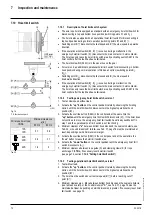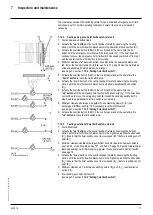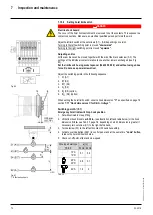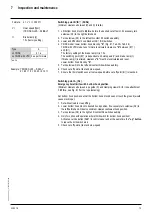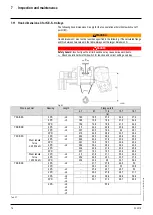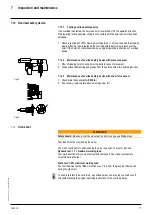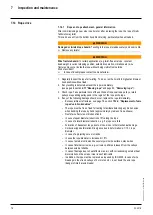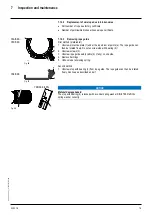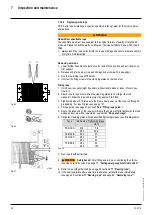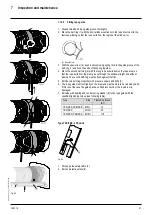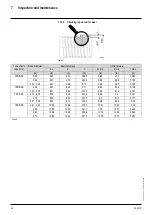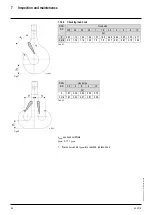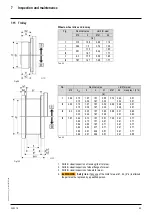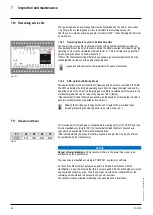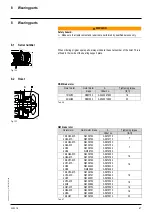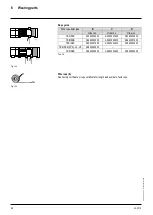
7
Inspection and maintenance
03.2018
73
ba
-o
.2
.6
.0
-us
-1.
1-
y
|
A
11
86
75
01
R
ev
A
A
Formula:
b = V × t × 0.023 ft
V =
Hoist speed [fpm]
(YKC/SKC-L05-
…S2
62
-V)
t =
Brake ramp [s]
1.5s (factory setting)
Type
b
on YK/SK
b = a
on YK/SK with VFD b as per formula
Tab. 36
Example: YKC/SKC-L05-
…S262
-V
b = 62 × 1.5 × 0.023 = 2.14 ft
Switching point B↑/B↑↑ (S3/S4)
(minimum clearance between B↑ and A↑
2.4 in.
)
1.
Lift bottom hook block to
0.39
in
. before the desired cut-off point, if necessary turn
setscrew (S3) to the right beforehand.
2.
Turn setscrew (S3) to the left until contact S3 switches audibly.
3.
Lower and lift bottom hook block until B↑ (S3) switches.
4.
YK/SK model: lower bottom hook block by
“b”
(Fig. 81, Tab. 35+Tab. 36).
YK/SK with VFD model: use formula to calculate clearance
“b”
between (B↑↑)
and
(B↑).
The factory setting of the brake ramp (t) is 1.5 s.
The switching point (B↑↑) is dependent on hoist speed (V) and brake ramp (t).
If brake ramp (t) is altered, clearance
“b”
must be recalculated and reset.
Lower bottom hook block by
“b”
.
5.
Turn setscrew S4 to the left until contact S4 switches audibly.
6.
Check cut-off point at fast and slow speed.
7.
Ensure that hoist switches over to slow speed before cut-
off point (B↑) is reached.
Switching point A↓ (S2)
Emergency hoist limit switch bottom hook position
(Minimum clearance between rope guide (S) and clamping claws (K) for rope attachment
= 0.79
in
.
, see Fig. 81 (for the rope fastening)
Set bottom hook position so that the bottom hook block does not touch the ground (would
cause slack rope).
1.
Set without load in creep lifting.
2.
Lower bottom hook block to desired hook position, if necessary turn setscrew (S2) to
the left beforehand. Observe minimum clearances/lowest hook position.
3.
Turn setscrew (S2) to the right until contact S2 switches audibly.
4.
Only for option with operational hoist limit switch for bottom hook position!
Activate override button (S261) in control panel and at the same time the
“up”
button
to leave the limit switch area.
5.
Check cut-off point at fast and slow speed.












